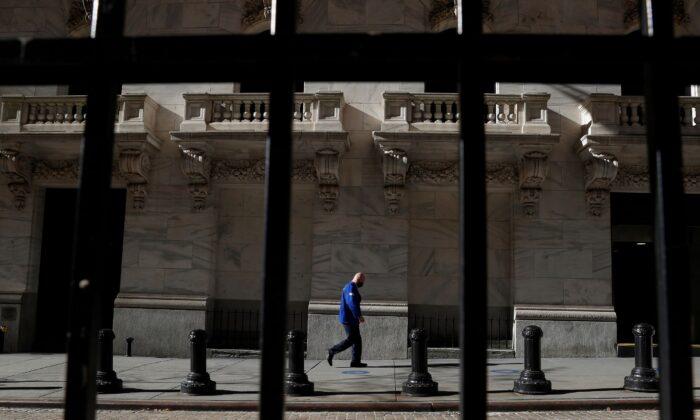WASHINGTON—U.S. services industry activity nudged up in September, but growth is being restrained by a persistent shortage of inputs and the resulting high prices as the pandemic drags on.
The Institute for Supply Management said on Tuesday its non-manufacturing activity index edged up to a reading of 61.9 last month from 61.7 in August. A reading above 50 indicates growth in the services sector, which accounts for more than two-thirds of U.S. economic activity.
Economists polled by Reuters had forecast the index falling to 60. A resurgence in COVID-19 infections, driven by the Delta variant, has delayed an anticipated upswing in demand for services like travel and other high-contact activities.
Spending is steadily shifting from goods to services as the economy normalizes after being severely disrupted by the pandemic. The survey’s measure of new orders received by services businesses inched up to 63.5 last month from a reading of 63.2 in August.
Like other segments of the economy, the services sector is grappling with shortages of raw materials and labor. There are little signs that these headwinds will recede anytime soon.
The ISM survey’s measure of supplier deliveries dipped to a reading of 68.8 last month from 69.6 in August. A reading above 50 indicates slower deliveries. With supply still tight, prices remained high. A measure of prices paid by services industries rose to 77.5 from a reading of 75.4 in August.
That mirrored the findings of the ISM’s manufacturing survey published last week Friday and suggested that high inflation could persist through the end of the year. The Federal Reserve last month raised its projection for its key inflation measure to 3.7 percent this year. That was up from the 3.0 percent projected in June.
The personal consumption expenditures price index, excluding the volatile food and energy components, increased 3.6 percent year-on-year in August—well above the U.S. central bank’s flexible 2 percent inflation target.
There was a steady build-up of unfinished work at services industries last month. Companies continued to hire more workers, though the pace slowed a bit from August. That likely reflects difficulties finding workers.
The economy is experiencing an acute shortage of labor as the pandemic forced some people to drop out of work to become caregivers. Others are reluctant to return for fear of contracting the virus, while some have either retired or are seeking career changes.
There were a record 10.9 million job openings at the end of July. The ISM survey’s measure of services industry employment dipped to a reading of 53.0 last month from 53.7 in August.
Economists are cautiously optimistic that the labor crunch will start easing in the fall and through winter following the expiration in September of federal government-funded unemployment benefits, which businesses and Republicans blamed for the worker shortage.





